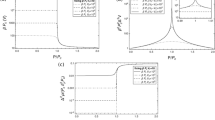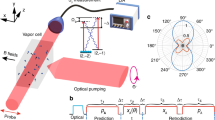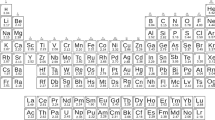Abstract
PAULI'S ‘Exclusion Principle’ applied to the simplest case of the two-electron or two-proton system (helium atom, hydrogen molecule) is usually stated as follows: if the electrons (or protons) are parallel, that is, if their spins point in the same direction, their eigenfunction must be antisymmetrical with respect to the co-ordinates; if the electrons (or protons) are antiparallel, that is, pointing in opposite directions, their eigenfunction must be symmetrical.
This is a preview of subscription content, access via your institution
Access options
Subscribe to this journal
Receive 51 print issues and online access
$199.00 per year
only $3.90 per issue
Buy this article
- Purchase on Springer Link
- Instant access to full article PDF
Prices may be subject to local taxes which are calculated during checkout
Similar content being viewed by others
Author information
Authors and Affiliations
Rights and permissions
About this article
Cite this article
FRENKEL, J. On the Correct Formulation of Pauli's Exclusion Principle. Nature 125, 235–236 (1930). https://doi.org/10.1038/125235b0
Issue Date:
DOI: https://doi.org/10.1038/125235b0
Comments
By submitting a comment you agree to abide by our Terms and Community Guidelines. If you find something abusive or that does not comply with our terms or guidelines please flag it as inappropriate.



